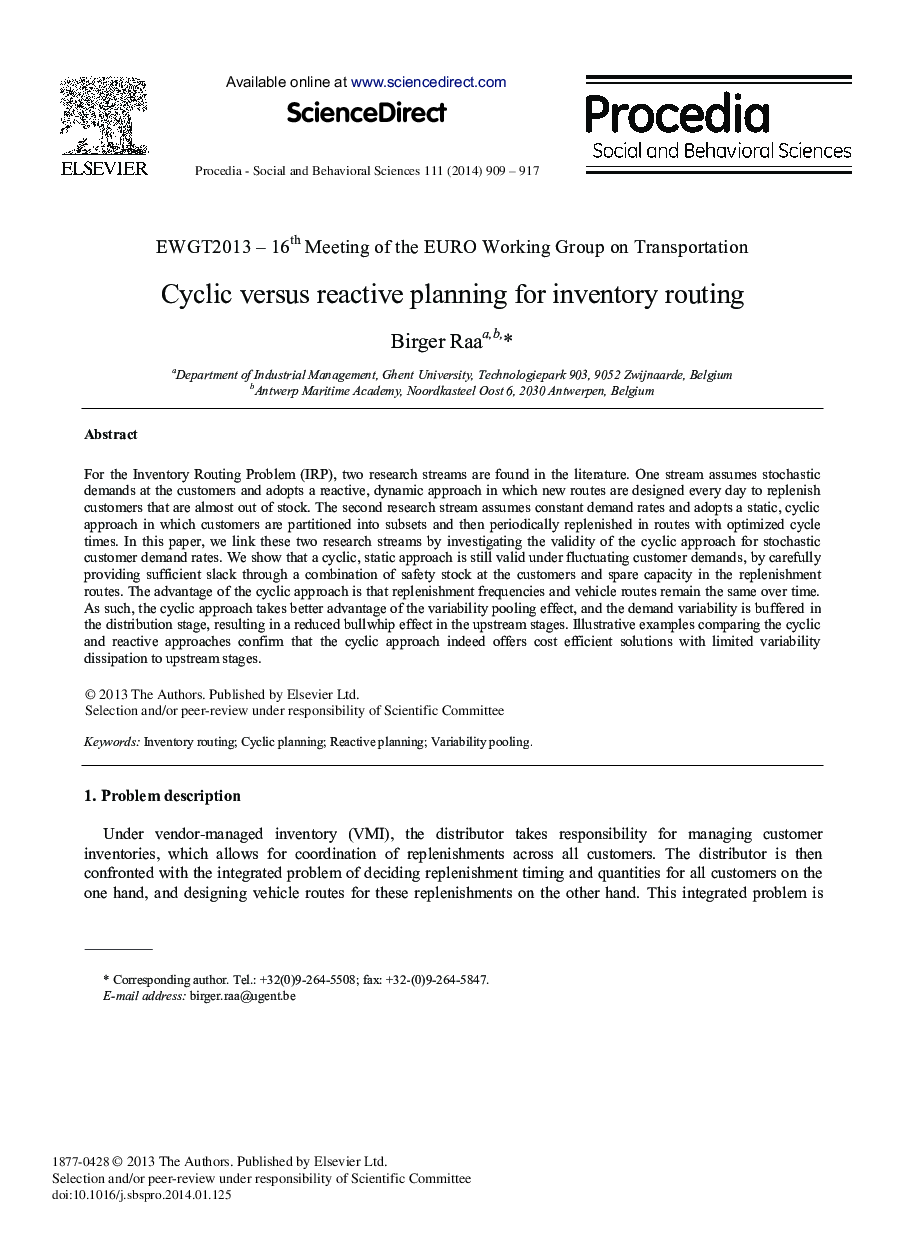| Article ID | Journal | Published Year | Pages | File Type |
|---|---|---|---|---|
| 1115978 | Procedia - Social and Behavioral Sciences | 2014 | 9 Pages |
For the Inventory Routing Problem (IRP), two research streams are found in the literature. One stream assumes stochastic demands at the customers and adopts a reactive, dynamic approach in which new routes are designed every day to replenish customers that are almost out of stock. The second research stream assumes constant demand rates and adopts a static, cyclic approach in which customers are partitioned into subsets and then periodically replenished in routes with optimized cycle times. In this paper, we link these two research streams by investigating the validity of the cyclic approach for stochastic customer demand rates. We show that a cyclic, static approach is still valid under fluctuating customer demands, by carefully providing sufficient slack through a combination of safety stock at the customers and spare capacity in the replenishment routes. The advantage of the cyclic approach is that replenishment frequencies and vehicle routes remain the same over time. As such, the cyclic approach takes better advantage of the variability pooling effect, and the demand variability is buffered in the distribution stage, resulting in a reduced bullwhip effect in the upstream stages. Illustrative examples comparing the cyclic and reactive approaches confirm that the cyclic approach indeed offers cost efficient solutions with limited variability dissipation to upstream stages.
